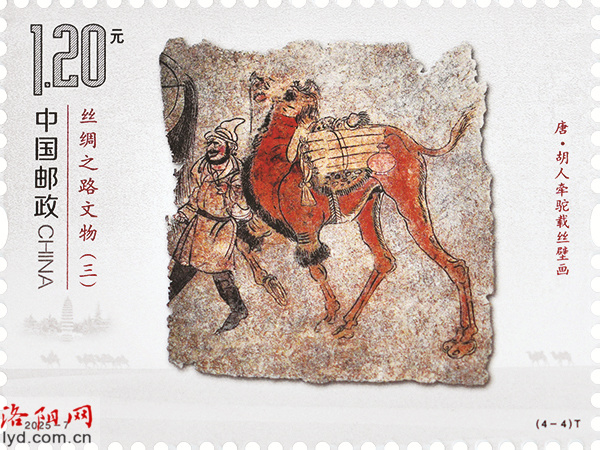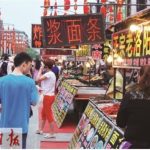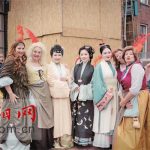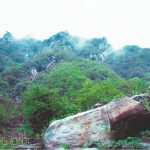
Recently, the special stamps “Silk Road Cultural Relics (III)” were issued. The four selected special stamps featuring precious cultural relics along the land Silk Road present a condensed form of a thousand-year-old civilization, recreating the brilliant picture of the Silk Road civilization within a small space.
Among them, the prototype of the fourth stamp, “Tang Hu Ren Leading a Camel Loaded with Silk”, was unearthed from the tomb of Tang Shi, the wife of Prince An Guo Xiang Wang of the Tang Dynasty in Luoyang and is now kept in Luoyang Ancient Tombs Museum. This mural vividly depicts the scene of merchants from various countries coming to Luoyang, one of the eastern starting points of the Silk Road, loading silk and setting off westward along the Silk Road. It objectively reflects the social scenes and secular customs of the Tang Dynasty and tells the story of the exchange and mutual learning of civilizations. In addition, the design elements of this stamp also include the Qi Yun Pagoda outside the gate of White Horse Temple.
Stamps are known as the “national business card” and are hailed as a “condensed encyclopedia”. They are an excellent medium for spreading fine culture. Despite their small size, stamps can reflect the history, culture and features of a country and an era. In recent years, the Erlitou National Archaeological Site Park in Luoyang and Laojun Mountain have been featured on stamps successively.(Reporter Yu ziyu, Correspondent Yin miaohui)








